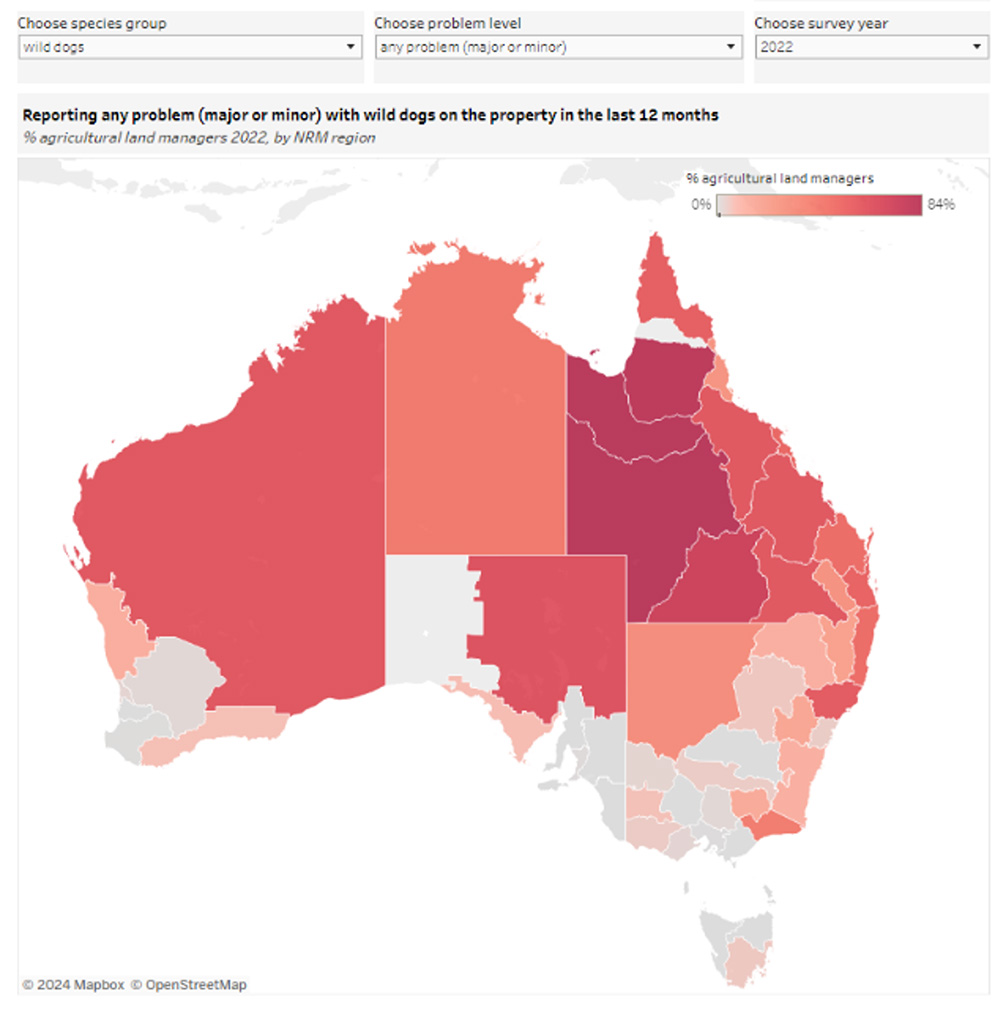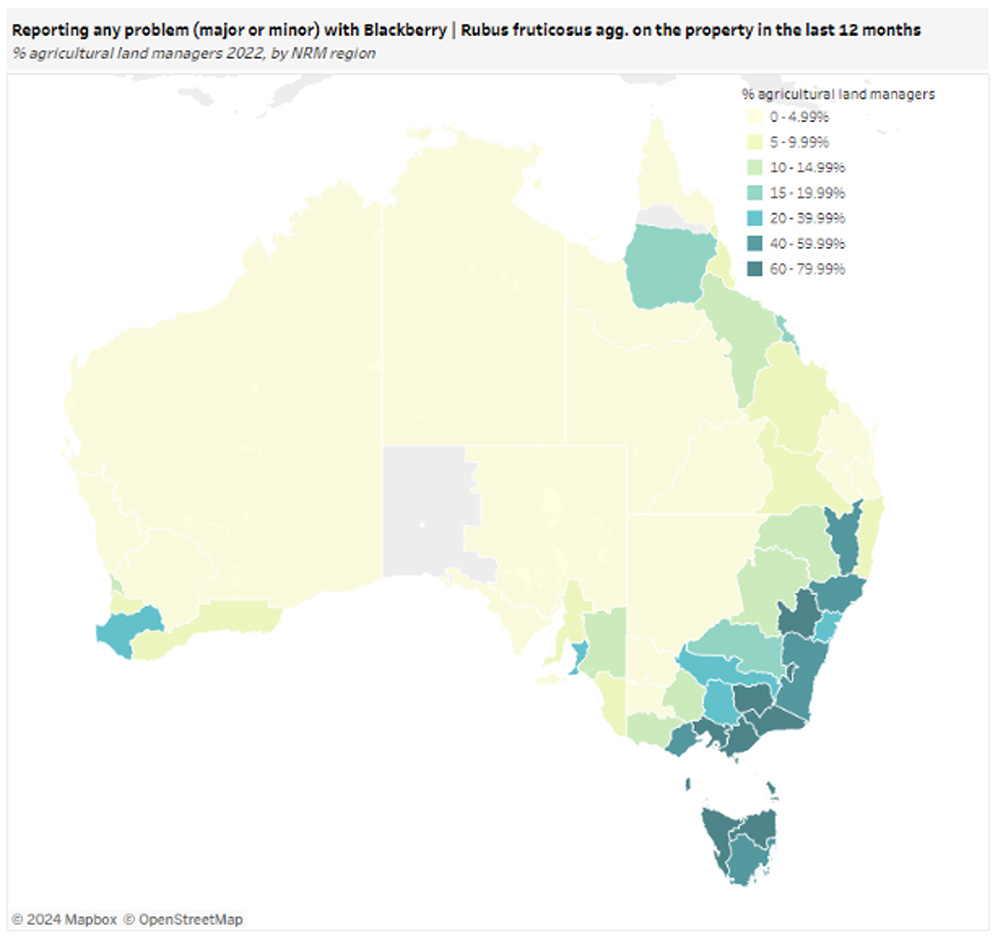Established pests and weeds pose significant challenges for farmers and land managers, reducing crop yields and lowering productivity. Having access to reliable data is critical to inform effective land management practices, policy development and support collaborative efforts to manage the spread of pest animals and weeds.
In 2016, 2019 and 2022, ABARES surveyed broadacre, horticulture and livestock land managers to understand the full impact of established pests and weeds on agricultural operations.
Now all three pests and weeds survey results have been integrated into the dashboard on the ABARES website.
Dipping into the dashboard, users can explore specific species or issues, across regions and through time. With the input of the additional 2022 data users can see that Fireweed, Feathertop Rhodes grass, Fleabane, African lovegrass, thistles, and Giant rats tail grass have spread to new properties and the application of herbicides has remained the most common tool for weed management.
Feral animals also continue to pose a challenge, with a 4% increase of land managers reporting issues in 2022, particularly from foxes, rabbits, hares, rats and mice.

The interactive dashboard also brings together detailed data on the associated costs of pests and weeds management activities, revealing that land managers are now spending on average close to $22,000 per year, up from the $15,200 they were spending in 2019.
To use the dashboard visit the ABARES website.
The pests and weeds surveys are funded by the department. To find out more visit Established Pest Animals and Weeds Management.




